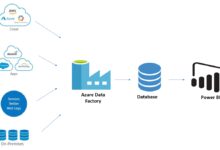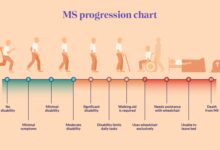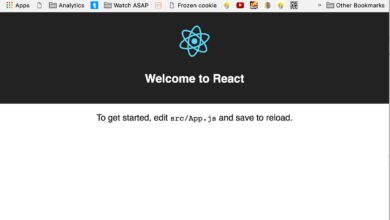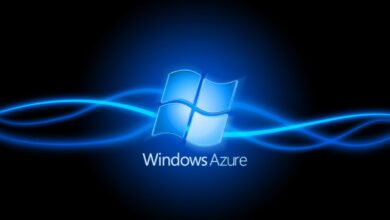and azure: 7 Powerful Ways to Transform Your Cloud Strategy
In today’s fast-evolving digital landscape, understanding how ‘and azure’ can elevate your business is no longer optional—it’s essential. From startups to enterprises, organizations are leveraging cloud capabilities through strategic integrations involving Azure. This guide dives deep into the synergy of technologies paired with Microsoft Azure, revealing powerful use cases, best practices, and real-world applications that drive innovation, scalability, and security.
Understanding the Core of ‘and azure’ in Modern Cloud Architecture

The phrase ‘and azure’ might seem simple, but it represents a vast ecosystem of integrations, partnerships, and technological synergies centered around Microsoft Azure. Whether it’s combining Azure with AI, IoT, Kubernetes, or legacy systems, the conjunction ‘and’ signifies integration—the cornerstone of modern cloud strategy.
What Does ‘and azure’ Actually Mean?
At its core, ‘and azure’ refers to the integration of Microsoft Azure with other platforms, tools, services, or infrastructures. It’s not just about using Azure in isolation but about how it connects, enhances, and amplifies other technologies. For example:
- Azure and Kubernetes for container orchestration
- Azure and GitHub for DevOps automation
- Azure and Power BI for advanced analytics
- Azure and Active Directory for identity management
Each combination unlocks new capabilities, making ‘and azure’ a gateway to hybrid, multi-cloud, and edge computing solutions.
The Evolution of Azure as an Integration Hub
Microsoft Azure started as a cloud infrastructure provider but has evolved into a comprehensive integration platform. According to Microsoft’s official site, Azure now supports over 200 services and integrates seamlessly with third-party tools via APIs, SDKs, and middleware.
“Azure isn’t just a cloud platform; it’s a bridge between on-premises systems, SaaS applications, and emerging technologies like AI and blockchain.” — Microsoft Cloud Architect, 2023
This transformation positions Azure as a central hub where ‘and azure’ becomes a strategic enabler for digital transformation.
Why Integration Matters in Cloud Computing
In isolation, even the most powerful cloud platform has limitations. The true value emerges when systems communicate. Integration reduces data silos, improves operational efficiency, and enables real-time decision-making. With ‘and azure’, businesses can:
- Connect legacy ERP systems with modern CRM platforms
- Sync on-prem databases with cloud analytics engines
- Automate workflows across tools like Salesforce, Teams, and Dynamics 365
These integrations are not just technical—they’re strategic differentiators.
and azure: Building Scalable Hybrid Cloud Environments
One of the most impactful applications of ‘and azure’ is in hybrid cloud architectures. Organizations no longer choose between on-premises and cloud—they leverage both. Azure enables this balance through services like Azure Stack, Arc, and ExpressRoute.
Azure Stack: Bringing the Cloud On-Premises
Azure Stack allows businesses to run Azure services directly in their data centers. This is ideal for industries with strict compliance requirements (e.g., healthcare, finance) where data must remain on-prem.
- Consistent API and tooling across cloud and on-prem
- Support for IaaS, PaaS, and serverless workloads
- Seamless migration paths to public Azure
When combined with existing infrastructure, ‘and azure’ via Azure Stack delivers a unified operational model.
Azure Arc: Managing Resources Across Environments
Azure Arc extends Azure’s management plane to any infrastructure—on-prem, edge, or multi-cloud. This means you can manage AWS EC2 instances or Google Cloud VMs using Azure Policy, RBAC, and monitoring tools.
Key benefits include:
- Centralized governance and compliance
- Unified security posture across clouds
- Consistent deployment of Kubernetes clusters
Learn more at Azure Arc official page.
Networking with ExpressRoute and VPN Gateway
Reliable connectivity is critical in hybrid setups. Azure ExpressRoute provides private, high-speed connections between on-prem networks and Azure, bypassing the public internet.
- Lower latency and higher bandwidth than public internet
- Support for MPLS, Ethernet, and IP-VPN connections
- Integration with SD-WAN solutions for optimized routing
When paired with Azure VPN Gateway for backup or smaller sites, ‘and azure’ ensures resilient, secure networking.
and azure: Accelerating AI and Machine Learning Workloads
Artificial Intelligence is no longer a futuristic concept—it’s a business imperative. Azure provides a robust platform for building, training, and deploying AI models, especially when combined with other tools and frameworks.
Azure Machine Learning and Open-Source Frameworks
Azure Machine Learning (Azure ML) supports popular open-source libraries like TensorFlow, PyTorch, and Scikit-learn. Data scientists can use Jupyter notebooks, automated ML, and MLOps pipelines directly in Azure.
- AutoML for rapid model development
- Integration with Databricks for large-scale data processing
- Model registry and version control for reproducibility
This synergy of ‘and azure’ with open-source tools democratizes AI across organizations.
Cognitive Services and Custom AI Solutions
Azure Cognitive Services offer pre-built APIs for vision, speech, language, and decision-making. These can be integrated into applications without deep AI expertise.
- Computer Vision API for image analysis
- Text Analytics for sentiment detection
- Speech-to-Text and Text-to-Speech for voice interfaces
For custom needs, Azure supports hybrid AI models—on-prem data processing with cloud-based inference—enabling privacy-preserving AI.
AI and IoT: Azure Sphere and Edge Intelligence
The convergence of AI and IoT is where ‘and azure’ shines. Azure IoT Hub, combined with Azure Machine Learning at the edge, allows real-time analytics on devices.
- Predictive maintenance in manufacturing
- Smart retail with computer vision at checkout
- Remote patient monitoring in healthcare
Azure Sphere secures IoT devices from chip to cloud, ensuring trust in AI-driven edge computing.
and azure: Securing Multi-Cloud and Hybrid Infrastructures
As organizations adopt multi-cloud strategies, security becomes fragmented. ‘and azure’ addresses this through unified security management, identity governance, and threat detection.
Microsoft Defender for Cloud: Unified Security Posture
Defender for Cloud provides centralized security management across Azure, AWS, and GCP. It assesses security posture, detects threats, and recommends remediations.
- Continuous vulnerability assessment
- Just-in-Time VM access to reduce attack surface
- File integrity monitoring and network protection
By integrating with third-party firewalls and SIEMs, ‘and azure’ creates a cohesive defense strategy.
Azure Active Directory and Identity Federation
Identity is the new perimeter. Azure AD (now Microsoft Entra ID) enables single sign-on (SSO), multi-factor authentication (MFA), and conditional access policies.
- Federate identities with on-prem AD via Azure AD Connect
- Secure access to SaaS apps like Salesforce, Dropbox, and Zoom
- Implement Zero Trust with identity-based access controls
When combined with third-party identity providers, ‘and azure’ ensures secure, seamless access across ecosystems.
Compliance and Governance with Azure Policy
Azure Policy enforces organizational standards across subscriptions. You can define rules for resource tagging, encryption, and network configurations.
- Prevent deployment of non-compliant resources
- Audit changes across environments
- Align with standards like GDPR, HIPAA, ISO 27001
With initiatives like ‘Azure Security Benchmark’, ‘and azure’ helps automate compliance at scale.
and azure: Optimizing DevOps and CI/CD Pipelines
Modern software delivery relies on speed, reliability, and automation. ‘and azure’ powers DevOps through Azure DevOps Services, GitHub Actions, and integration with Jenkins, Terraform, and Ansible.
Azure DevOps and GitHub Integration
Azure DevOps offers end-to-end tools for planning, coding, testing, and deploying. With GitHub Actions, you can trigger CI/CD pipelines directly from GitHub repositories.
- YAML-based pipelines for version-controlled workflows
- Integration with Azure Kubernetes Service (AKS)
- Test automation and deployment approvals
This tight coupling of ‘and azure’ with GitHub accelerates software delivery.
Infrastructure as Code with Terraform and Bicep
IaC ensures consistency and repeatability in cloud deployments. Azure supports both HashiCorp Terraform and Microsoft’s Bicep language.
- Bicep: A declarative DSL for ARM templates—simpler and more readable
- Terraform: Multi-cloud support with state management
- Store templates in Git for auditability and collaboration
Using ‘and azure’ with IaC tools reduces manual errors and enables GitOps practices.
Monitoring and Feedback Loops with Application Insights
Azure Application Insights provides real-time monitoring of applications, capturing logs, traces, and performance metrics.
- Track user behavior and error rates
- Set up alerts for anomalies
- Integrate with Power BI for dashboards
When combined with CI/CD, ‘and azure’ creates closed-loop feedback systems for continuous improvement.
and azure: Enabling Data Analytics and Business Intelligence
Data is the lifeblood of modern enterprises. ‘and azure’ unlocks insights through integrated analytics platforms like Azure Synapse, Databricks, and Power BI.
Azure Synapse Analytics: Unified Data Warehousing and Big Data
Azure Synapse combines data integration, data warehousing, and big data analytics in a single service.
- Infinite scaling with serverless SQL pools
- Integrated Apache Spark for real-time processing
- Seamless connectivity to Power BI and Azure ML
With ‘and azure’, organizations can analyze petabytes of data without managing infrastructure.
Azure Databricks and Delta Lake for Advanced Analytics
Azure Databricks, built on Apache Spark, is optimized for AI and machine learning workloads. Delta Lake adds reliability to data lakes with ACID transactions.
- Collaborative notebooks for data scientists
- Streaming data ingestion from IoT and logs
- Integration with MLflow for model tracking
The combination of ‘and azure’ with Databricks enables scalable, collaborative data science.
Power BI and Azure: Visualizing Enterprise Data
Power BI, deeply integrated with Azure, transforms raw data into interactive dashboards.
- DirectQuery to Azure SQL Database and Synapse
- AI-powered insights with Quick Insights
- Embed dashboards in custom applications
With ‘and azure’, decision-makers get real-time visibility into KPIs and trends.
and azure: Future-Proofing with Emerging Technologies
The future of cloud is not static. ‘and azure’ is at the forefront of integrating emerging technologies like quantum computing, blockchain, and metaverse applications.
Azure Quantum: Exploring Next-Gen Computing
Azure Quantum provides access to quantum hardware and software from partners like IonQ and Quantinuum.
- Develop quantum algorithms using Q#
- Solve complex optimization problems
- Simulate quantum systems in the cloud
While still experimental, ‘and azure’ in quantum computing opens doors for breakthroughs in cryptography, materials science, and logistics.
Azure Blockchain Services and Distributed Ledger Solutions
Although Microsoft retired Azure Blockchain Service in 2021, it now supports blockchain via Azure Web3, focusing on decentralized identity and NFTs.
- Build decentralized apps (dApps) on Ethereum and Polygon
- Secure digital identities with ION on Bitcoin
- Tokenize assets and manage NFTs
‘and azure’ in Web3 enables enterprises to explore blockchain without managing nodes.
Azure and the Metaverse: Spatial Computing with Mesh
Microsoft Mesh allows holographic collaboration across devices. Combined with Azure’s AI and networking, it enables immersive experiences.
- Virtual meetings with avatars and 3D models
- Training simulations in mixed reality
- Integration with Dynamics 365 Guides for field service
As the metaverse evolves, ‘and azure’ will power the backend infrastructure for spatial computing.
What does ‘and azure’ mean in cloud computing?
‘and azure’ refers to the integration of Microsoft Azure with other technologies, platforms, or systems—such as AI, IoT, Kubernetes, or on-prem infrastructure—to create hybrid, scalable, and intelligent solutions.
How does Azure support hybrid cloud environments?
Azure supports hybrid clouds through services like Azure Stack (on-prem Azure), Azure Arc (multi-cloud management), and ExpressRoute (private networking), enabling seamless operations across environments.
Can Azure be used with non-Microsoft tools?
Yes, Azure integrates with a wide range of non-Microsoft tools including GitHub, Terraform, Jenkins, AWS, GCP, and open-source frameworks like TensorFlow and Kubernetes.
Is Azure secure for enterprise workloads?
Absolutely. Azure offers robust security features including Microsoft Defender for Cloud, Azure Active Directory, encryption at rest and in transit, and compliance with global standards like GDPR and HIPAA.
What are the future trends for ‘and azure’?
Future trends include deeper AI integration, edge computing with Azure IoT, quantum computing via Azure Quantum, and enterprise adoption of Web3 and metaverse technologies powered by Azure infrastructure.
The phrase ‘and azure’ is more than a grammatical construct—it’s a strategic mindset. It represents the power of integration, the flexibility of hybrid architectures, and the innovation driven by combining Azure with other technologies. From securing multi-cloud environments to enabling AI at the edge, ‘and azure’ is transforming how businesses operate in the digital age. As cloud computing evolves, the ability to connect, scale, and innovate will define success—and Azure is at the center of that evolution. Whether you’re building data pipelines, securing identities, or exploring quantum computing, embracing ‘and azure’ is the key to unlocking your organization’s full potential.
Further Reading:









